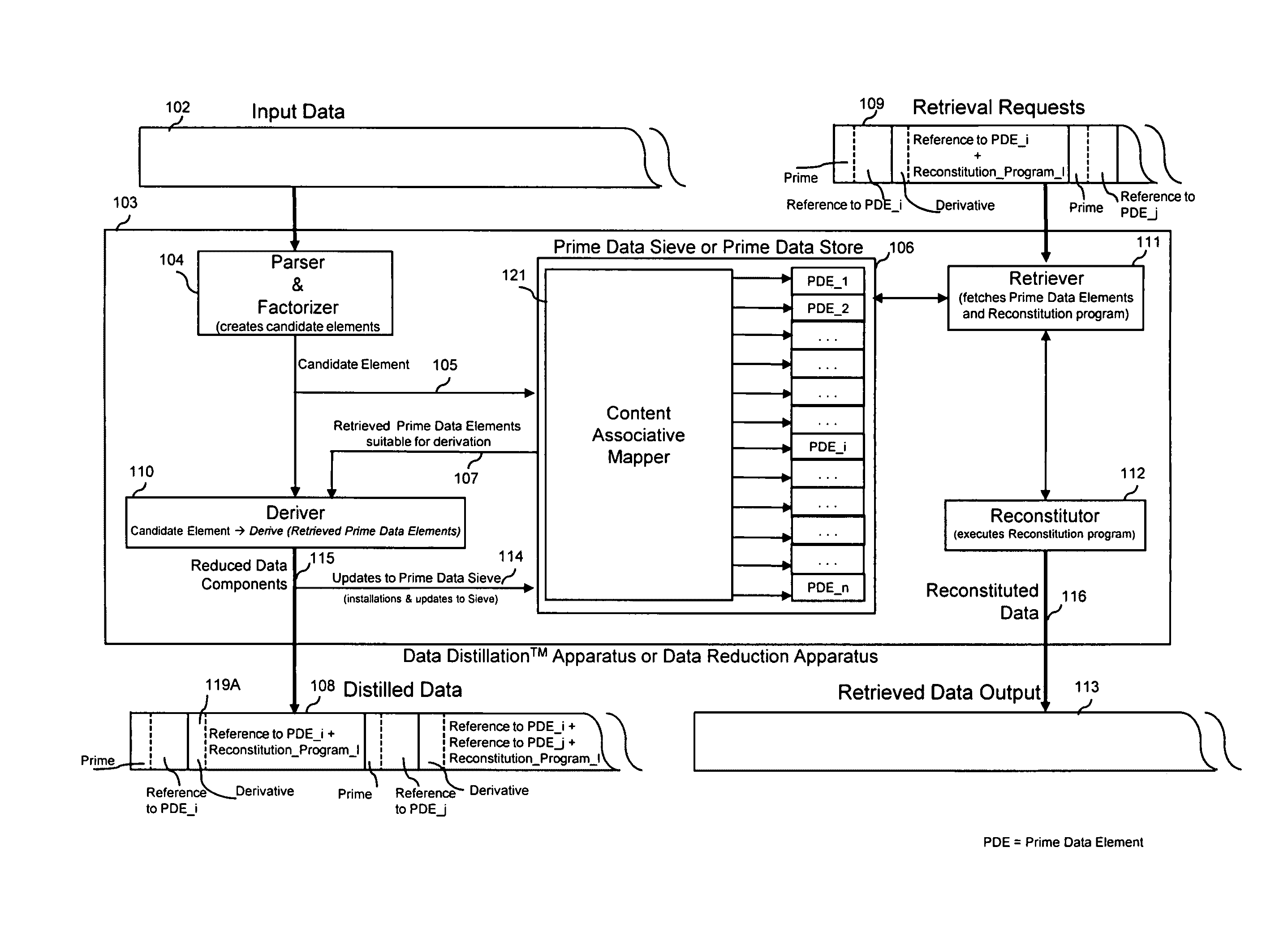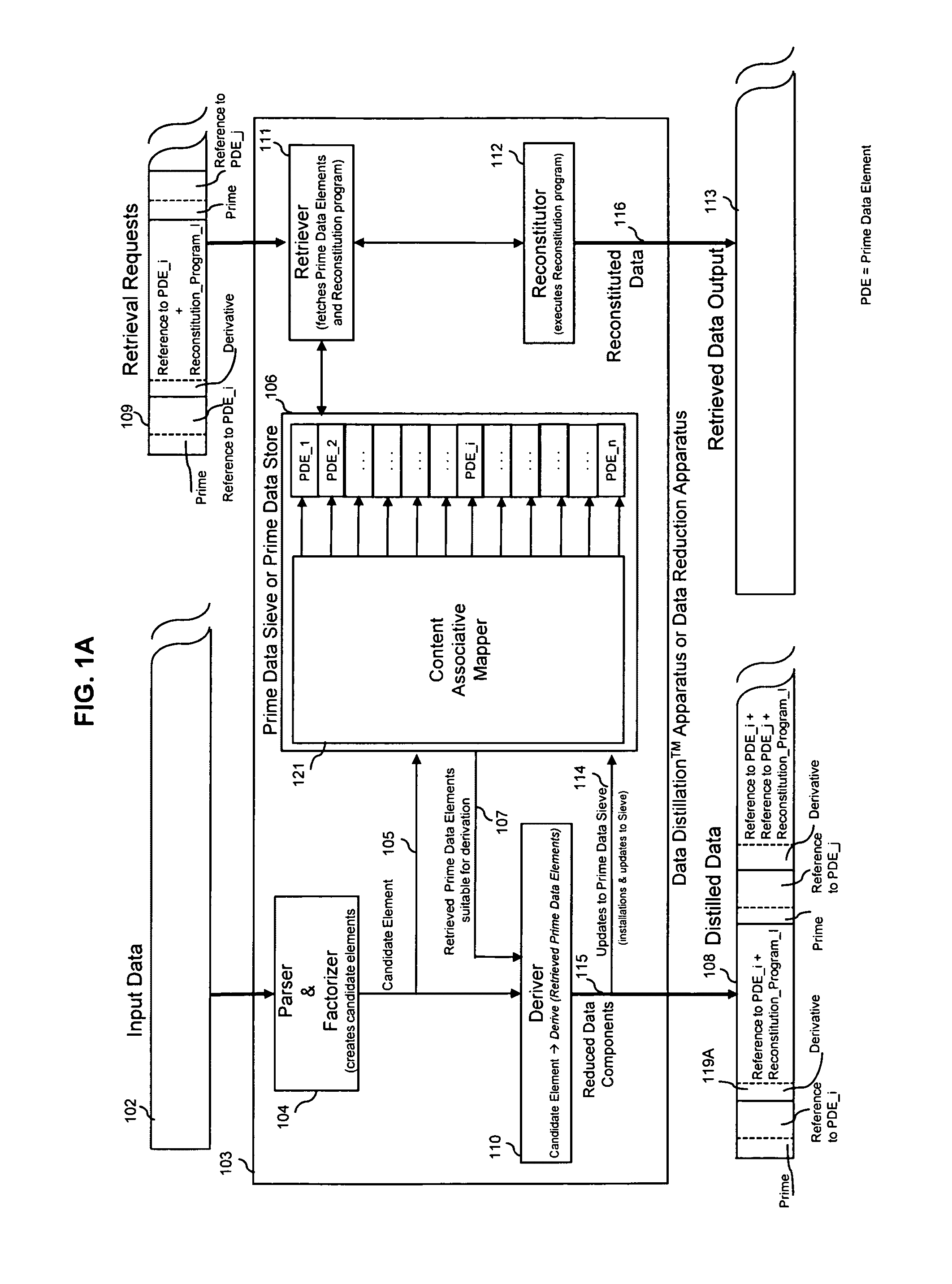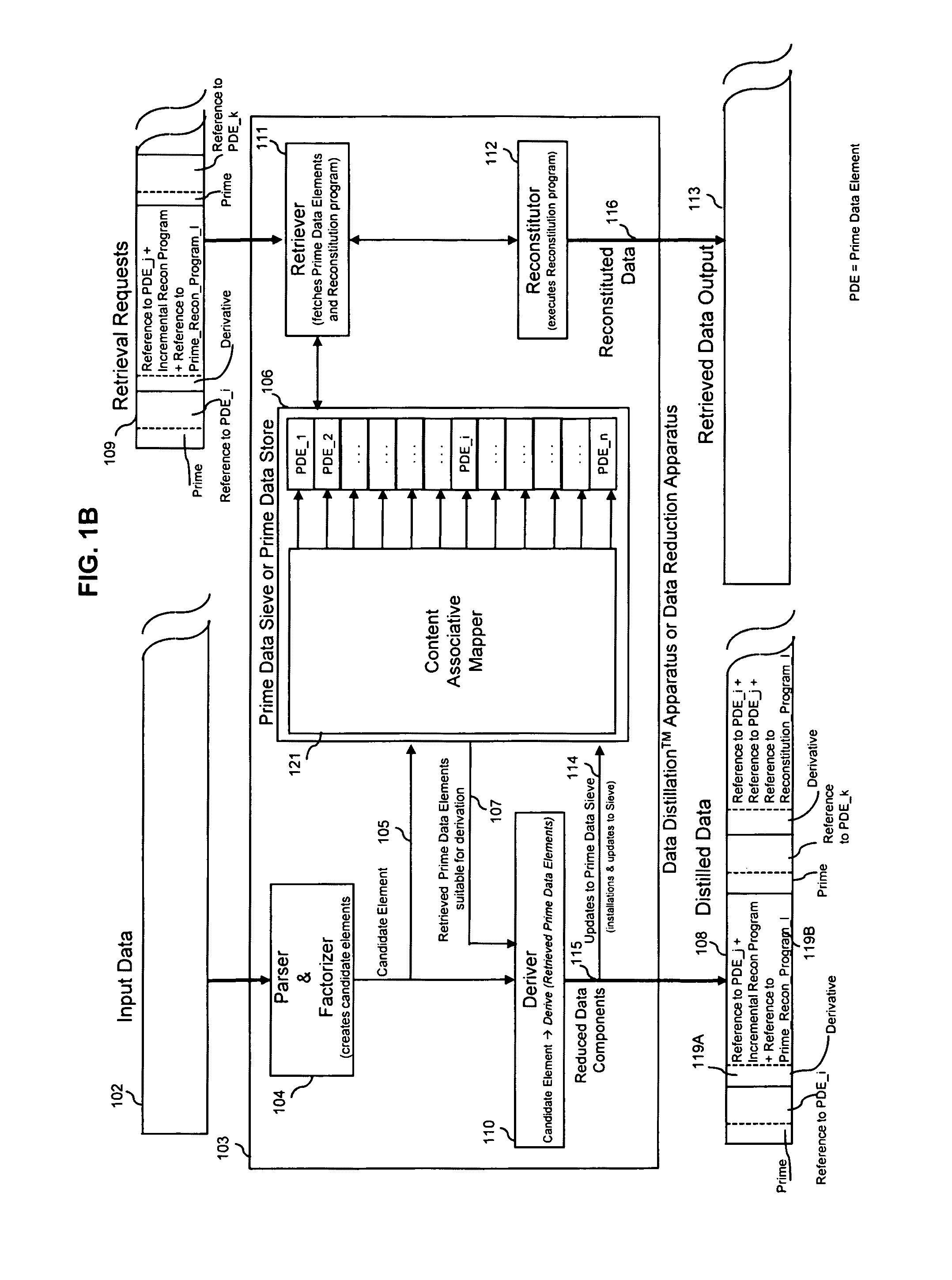Performing multidimensional search and content-associative retrieval on data that has been losslessly reduced using a prime data sieve
a data sieve and data technology, applied in multi-dimensional databases, database models, instruments, etc., can solve the problems of large amount of data spent on computer systems to process, and the data is not structured and unsuitable for entry into traditional databases
- Summary
- Abstract
- Description
- Claims
- Application Information
AI Technical Summary
Benefits of technology
Problems solved by technology
Method used
Image
Examples
Embodiment Construction
[0078]The following description is presented to enable any person skilled in the art to make and use the invention, and is provided in the context of a particular application and its requirements. Various modifications to the disclosed embodiments will be readily apparent to those skilled in the art, and the general principles defined herein may be applied to other embodiments and applications without departing from the spirit and scope of the present invention. Thus, the present invention is not limited to the embodiments shown, but is to be accorded the widest scope consistent with the principles and features disclosed herein. In this disclosure, when a phrase uses the term “and / or” with a set of entities, the phrase covers all possible combinations of the set of entities unless specified otherwise. For example, the phrase “X, Y, and / or Z” covers the following seven combinations: “X only,”“Y only,”“Z only,”“X and Y, but not Z,”“X and Z, but not Y,”“Y and Z, but not X,” and “X, Y, ...
PUM
 Login to View More
Login to View More Abstract
Description
Claims
Application Information
 Login to View More
Login to View More - R&D
- Intellectual Property
- Life Sciences
- Materials
- Tech Scout
- Unparalleled Data Quality
- Higher Quality Content
- 60% Fewer Hallucinations
Browse by: Latest US Patents, China's latest patents, Technical Efficacy Thesaurus, Application Domain, Technology Topic, Popular Technical Reports.
© 2025 PatSnap. All rights reserved.Legal|Privacy policy|Modern Slavery Act Transparency Statement|Sitemap|About US| Contact US: help@patsnap.com



